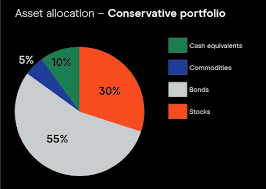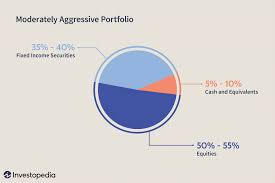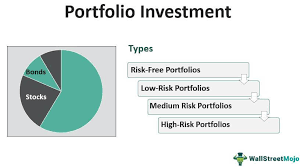
Capital Markets: Understanding Investment Portfolios
At David T Rosen, we understand the importance of investing in the capital markets to achieve long-term financial growth. Investment portfolios offer a serious investor a broad range of options, from various mutual funds to stocks and bonds to real estate and commodities, providing investors with diverse opportunities to grow their wealth. In this article, we’ll look in-depth at investment portfolios, what they are, how they work, and how to build a successful investment portfolio to help you achieve your financial goals.
What is an Investment Portfolio?
An investment portfolio is a collection of assets an individual or entity holds, including stocks, bonds, and other securities. The primary objective of an investment portfolio is to generate long-term returns while minimizing risk. Portfolios can be constructed using various investing strategies, including diversification, asset allocation, and market timing, with each approach designed to achieve different investment goals.
Diversification: The Key to Successful Portfolios
Diversifying through alternative investments is one of the most critical aspects of a successful investment and income portfolio. Diversification is an income portfolio that involves reading your income-oriented investments across asset classes and securities to reduce risk. Investing in a diverse range of assets can reduce the impact of market fluctuations on your fixed-income investments, savings accounts, and portfolio, reducing the risk of significant losses.
Asset Allocation: Finding the Right Mix
Asset allocation is another critical element of successful portfolio construction and management. Asset allocation involves determining the optimal mix of assets for your investment and portfolio management based on your investment goals, risk tolerance, and time horizon. You can reduce risk by allocating investments across different asset classes while maximizing returns.
Building a Successful Investment Portfolio
Successful investment and portfolio management requires careful planning, research, and execution. Here are some steps you can take to build a successful investment and portfolio management now:
Determine Your Investment Goals:
The first step in building an investment portfolio is determining your investment goals. Are you looking to: generate income, long-term capital growth, regular income, or a combination?
Assess Your Risk Tolerance:
Your risk tolerance is an essential factor in building an investment portfolio. Understanding your risk tolerance can help you choose the right mix of assets to achieve your investment goals.
Conduct Research:
Research is critical when building an investment portfolio. It would help if you researched the different asset classes, securities, and investment strategies to identify the right mix of investments for your portfolio.
Determine Asset Allocation:
You can determine your portfolio’s optimal mix of assets based on your investment goals, risk tolerance, and research.
Monitor and Adjust Your Portfolio:
As market conditions and interest rates change, you may need to adjust your portfolio allocations, asset allocation, or investment strategy to maintain your portfolio’s performance.
A retirement investment portfolio offers a range of options, allowing investors to grow their wealth while minimizing risk. Building a successful investment portfolio for retirement requires careful planning, research, and execution, focusing on diversification and asset allocation. At David T Rosen, we can help you build a successful investment portfolio for retirement by investing your money together to help you achieve your long-term financial goals.

Allocate your investments
The first step is to allocate and fund your investments across different asset classes based on your investment goals and risk tolerance. This is known as asset allocation. The asset allocation should reflect your financial plan and desired level of risk and reward and be adjusted over time as your investment goals or risk tolerance change.
Once you have determined your asset allocation, you can select specific securities or companies within each asset class to invest your funds. For example, you may invest money in a fund of individual stocks or exchange-traded funds (ETFs) that track particular sectors, companies, or indices within the standard stock asset class.
The next step is to monitor and adjust your investment portfolio regularly. This means reviewing your portfolio’s performance, making any necessary changes to your asset allocation, and rebalancing your portfolio to ensure it stays aligned with your investment goals.
In conclusion, successful investment and portfolio management require careful planning, research, and execution. You can achieve your long-term financial goals by diversifying your investments, allocating your assets wisely, and monitoring your portfolio or mutual fund’s performance. At David T Rosen, we can help you build a successful investment and portfolio management that can help you achieve your financial objectives. Contact us today to learn more.

Building a successful investment portfolio is critical to achieving long-term financial goals. A well-diversified portfolio can help investors manage risks, maximize returns, and protect against market volatility. This article will discuss the critical steps in building an investment portfolio to help you achieve your financial objectives.
Step 1: Determine Your Investment Goals
The first step in building an investment portfolio is determining your investment goals. Your investment goals should be based on your financial objectives, risk tolerance, and time horizon. For retirement investors, for example, if you are saving for retirement, your investment goals may include generating income, preserving capital, and achieving long-term growth.
Step 2: Understand Your Risk Tolerance
Once you have determined your investment goals, you must assess your risk tolerance. Risk tolerance in investing is the amount of risk you are willing to take to achieve and fund your investment objectives. Choosing investments that match your risk tolerance is essential to ensure that you are comfortable with your risk level all your eggs.
Step 3: Choose Your Asset Allocation
After determining your investment goals and risk tolerance, the next step is to choose your asset allocation. Asset allocation refers to dividing your portfolio into asset classes, such as stocks, bonds, and real estate. Asset allocation aims to diversify your portfolio across various assets to minimize risk and maximize returns.
When choosing your asset allocation, you should consider the level of risk associated with each asset class and how it fits into your investment goals and risk tolerance. For example, stocks are generally considered riskier investments than bonds but offer higher returns over the long term.

Step 4: Select Your Investments
Once you have determined your asset allocation, you can select specific securities within each asset class to invest your funds. For example, suppose you have allocated a portion of funds in your portfolio to stocks. In that case, you may invest your funds in one basket of individual stocks, exchange-traded funds (ETFs), or mutual funds that track specific sectors or indices of stocks.
When selecting your investments, you should consider various factors, such as historical performance, fees, management quality, and market trends. Many investors must conduct thorough research and due diligence to make informed investment decisions.
Step 5: Monitor and Adjust Your Portfolio
After building your investment portfolio, the next step is to monitor and adjust it regularly. This means reviewing your portfolio’s performance, making any necessary changes to your asset allocation, and rebalancing your portfolio to ensure it stays aligned with your investment goals.
Rebalancing your portfolio involves adjusting your asset allocation periodically to maintain the investor or desired level of risk and reward. For example, if the value of your stock investments and bonds has increased significantly, you may need to sell some of your stocks and invest the money in bonds to rebalance your portfolio.
Building a successful investment portfolio requires careful planning, research, and execution. You can achieve your long-term financial goals by determining your investment goals, assessing your risk tolerance, choosing your asset allocation, selecting your investments, and monitoring and adjusting your portfolio regularly.
At David T Rosen, we have a financial advisor who can be a financial advisor to help you build a customized investment portfolio from your retirement account to your retirement portfolios to your brokerage accounts to help you achieve your financial objectives. Contact us today to learn more about our investment solutions and services.

Minimize Risk
One of the primary benefits of diversification is that it helps minimize risk. Investing in various asset classes, industries, and geographies can reduce the impact of any one investment or market downturn on your overall portfolio.
For example, if you have a significant portion of your stock portfolio, a sudden decline in the stock market could cause your portfolio to suffer substantial losses.
However, your losses may be mitigated if you have a well-diversified portfolio that includes stocks, bonds, real estate, and other asset classes.
Maximize Returns
Another critical benefit of diversification is that it can help maximize returns. Investing in various asset classes allows you to exploit different market cycles and economic conditions.
For example, while stocks may perform well during economic growth, bonds may outperform during a recession.
By diversifying your portfolio, you can capture these different market cycles and potentially achieve higher returns over the long term.
Protect Against Inflation
Inflation can erode the value of your investments over time. However, diversifying your portfolio with assets that have historically performed well during inflation can protect your portfolio against inflationary pressures.
For example, real estate and commodities are often considered inflation hedges for advanced investors, as they perform well as fixed-income investments during rising prices.

Conclusion
Building a well-diversified investment portfolio is more critical than ever in today’s fast-paced and complex investment landscape.
By determining your investment goals, assessing your risk tolerance, choosing your asset allocation, selecting your investments, and monitoring and adjusting your portfolio regularly, you can achieve your long-term financial objectives while minimizing risk and maximizing returns.
CoopBusiness is a revolutionary cooperative business-building platform that empowers individuals to become entrepreneurs, business owners, and financially independent.
As a member, you’ll receive top-level business mentorship, access to our proprietary business systems, and the opportunity to access the funds you want to turn your business ideas into reality.